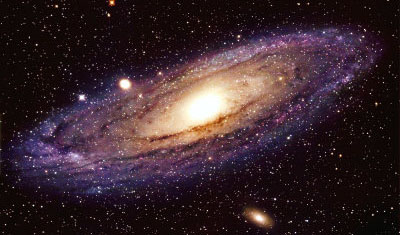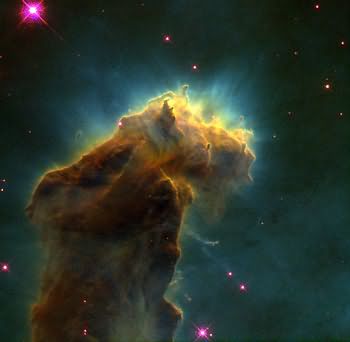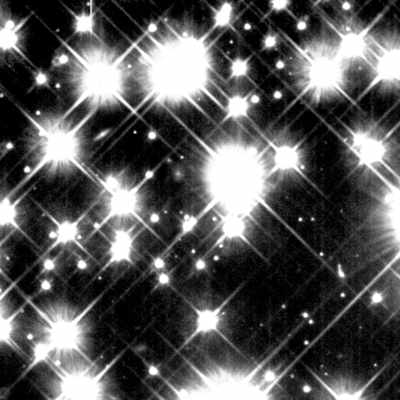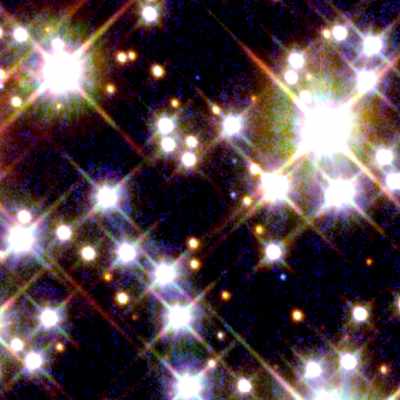Stars
A star is a giant ball of gas, like our Sun. They can range in size from tiny neutron stars to massive hypergiants. Stars are born, they live, and they die, much like any living creature.
Stars are born in clouds of gas and dust, called nebulae. Sometimes, some of the gas and dust begins to clump together, and soon begins to collapse. As it collapses, the center heats up, forming what is called a protostar. Eventually, the cloud collapses into a hot core. The core begins to gather has and dust, some of which will become asteroids, comets, or even planets, and a star is born.
After a few million years, the star will enter the main sequence, a stars version of adulthood. Main sequence stars are stable, converting hydrogen to helium at a steady rate. Stars such as our Sun will remain in the main sequence for ten billion years, and smaller stars such as red dwarfs even longer. Larger stars, however, remain in the main sequence for a much breifer period of time, only a few million years, burning up their fuel supply at alarming rates.
Eventually stars burn up their supply of hydrogen, and it's
nuclear reactions cease. The core begins to collapse and heat up. There is still hydrogen outside the core, however, so the star continues to fuse hydrogen into helium outside the core. The star begins to expand, turning into a red giant, or in some cases, a red supergiant. If the star is large enough, the core can become hot enough to start fusing helium to create other elements, such as carbon. The stars nuclear reactions become increasingly unstable, causing the outer layers to be thrown out into space.
Stars up to 1.4 times the size of our Sun will eventually throw out all of their outer layers, leaving behind a dense core, called a White Dwarf, along with a planetary nebula, once the stars outer layers. In some cases, such as when the white dwarf forms in a binary star system, it will begin leeching hydrogen away from its companion star. When enough hydrogen builds up on the white dwarfs surface, a short burst of fusion occurs, causing the dwarf star to glow for a few days and throw the remaining material into space. The process starts again.
However, larger white dwarf stars will gather so much matter, that they will collapse and explode, and an event known as a Type 1a supernova occurs.
If a star has sufficient mass, above 1.4 times that of our Sun, it will begin fusing different elements in its core, eventually
creating iron, and the fusion ceases. Fusing iron expends energy instead of creating it, and the core collapses to little over 19 kilometers in diameter in a matter of seconds. Temperatures inside the tiny core increase to over 100 billion degrees. The outer layers are violently blown away by the intense increase in energy, creating a supernova remnant nebula. Supernovae can be brighter than entire galaxies.
Stars can be different colors depending on their temperature. Stars with a temperature of 3,000°C glow red, stars with a temperature of 5,500°C are yellow, white stars have a temperature of 7,000°C, and stars with a temperature of 28,000°C are blue.
Stars can form patterns in the night sky called constellations. Some famous constellations include The Big Dipper, The Little Dipper and Orion.






